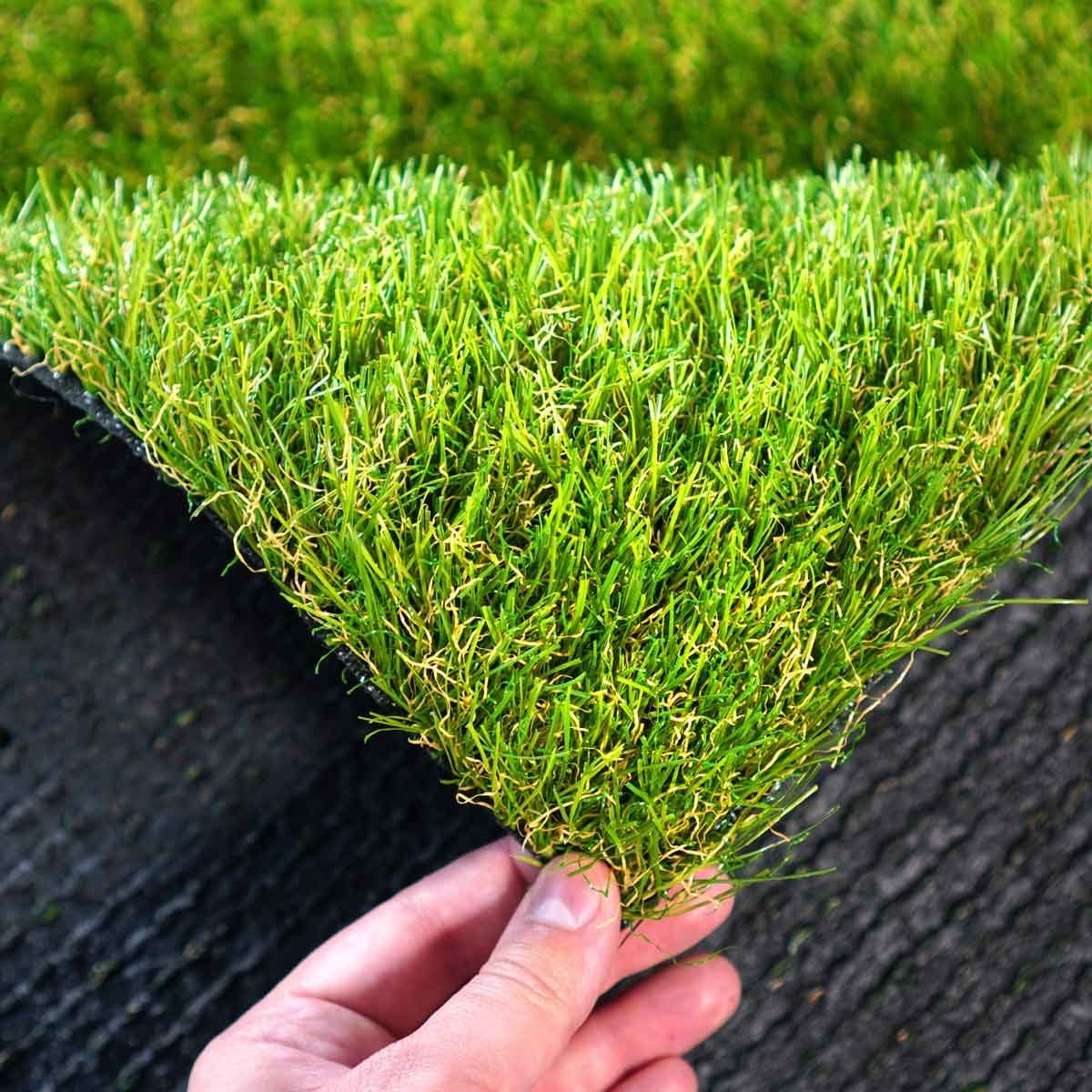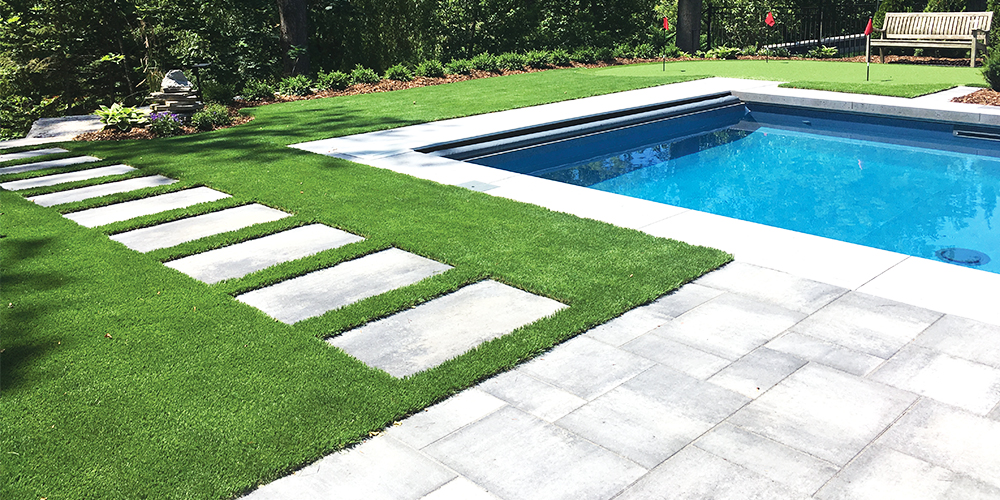Sustainable Arizona Artificial Turf for a Always-Green Lush Green Lawn
Sustainable Arizona Artificial Turf for a Always-Green Lush Green Lawn
Blog Article
Delve Into the Environmental Perks of Opting for Synthetic Grass Solutions
The adoption of man-made turf options offers a compelling possibility to deal with pressing ecological challenges. By substantially decreasing water use and minimizing the application of dangerous chemicals, these choices not just promote lasting landscape design but likewise shield local ecological communities.
Water Conservation Perks
One of the most significant advantages of synthetic grass is its capability to save water. In contrast, synthetic turf does not need watering, considerably minimizing the total need for water resources.
By eliminating the demand for regular watering, artificial lawn adds to lasting landscape methods and aids mitigate the ecological effect of too much water intake. The conservation of water extends to the decrease of runoff, which can lead to soil disintegration and waterway contamination.
Furthermore, the installation of man-made lawn permits house owners and municipalities to allocate water resources much more successfully, concentrating on crucial usages such as alcohol consumption water and agriculture. The change in the direction of synthetic grass not only promotes responsible water use yet additionally straightens with more comprehensive ecological objectives targeted at maintaining all-natural sources.
As areas significantly focus on sustainability, the water preservation benefits of synthetic grass present a compelling case for its fostering in industrial and domestic landscaping projects.
Reduced Chemical Use
The change to synthetic grass significantly lowers the dependence on chemical treatments commonly made use of in natural lawn maintenance. Typical turf management generally involves the application of plant foods, herbicides, and pesticides to promote development and control insects. These chemicals can pose threats to human health and wellness, local wild animals, and the environment, adding to soil and water contamination.
On the other hand, synthetic lawn gets rid of the demand for these dangerous substances. When installed, it needs minimal maintenance, mainly containing routine cleansing and irregular infill replenishment. This decrease in chemical use not only profits the immediate atmosphere but additionally contributes to more comprehensive environmental stability. By decreasing the release of synthetic substances right into the ecological community, synthetic grass promotes healthier soil and water supply.
Moreover, the absence of chemical overflow connected with fabricated turf installations assists secure neighborhood rivers from pollution, supporting aquatic life and preserving biodiversity. Arizona turf. As communities increasingly prioritize lasting techniques, going with artificial grass provides a practical service that aligns with environmental conservation goals. Via this change, homeowner can delight in lush green spaces without endangering eco-friendly health and wellness, leading the method for a more sustainable future
Lower Carbon Impact

Moreover, the installation of fabricated lawn can lead to significant water preservation. Natural lawns need significant amounts of water for irrigation, which not only includes in the carbon impact associated with water extraction and treatment however hop over to these guys likewise stress regional water sources. In comparison, synthetic grass needs marginal maintenance, calling for no watering, consequently considerably lowering water use and its have a peek here linked power prices.
Additionally, the long life of man-made lawn adds to its reduced carbon impact. With a life-span of approximately 15 years or more, the requirement for frequent replacements is decreased, leading to much less waste and lower energy usage in production and disposing of typical grass options. In general, synthetic grass provides a lasting alternative for environmentally mindful landscape design.
Environment Conservation
Environment preservation is an important consideration in the debate over landscape design selections, particularly when contrasting man-made grass to all-natural grass. Natural turf yards often call for comprehensive upkeep, consisting of using herbicides, pesticides, and fertilizers, which can adversely impact local ecological communities. These chemicals can leach right into the soil and rivers, harming native plants and fauna and interfering with local habitats.
Artificial turf gets rid of the requirement for harmful chemicals, thus securing neighboring wild animals and keeping the honesty of bordering communities. The setup of man-made lawn can lead to the conversion of previous yard locations right into even more biodiverse landscapes, such Full Report as pollinator yards or indigenous plant locations, which can support regional wildlife.
Eventually, the shift to man-made lawn not just preserves water and lowers upkeep initiatives but also fosters a much more unified partnership in between human tasks and the natural surroundings, promoting habitat conservation while doing so.
Long-Term Sustainability
Long-lasting sustainability is a crucial consider reviewing the benefits of synthetic grass over typical lawn lawns. One of one of the most substantial benefits of synthetic grass is its durability; it can last approximately 15-20 years with very little maintenance, whereas all-natural turf requires constant reseeding and replacement. This longevity lowers the requirement for constant sources, such as water, plant foods, and pesticides, which are important for maintaining a healthy yard lawn.
Additionally, synthetic grass adds to a decrease in carbon exhausts connected with lawn treatment devices. Conventional yards often require gas-powered lawn mowers, trimmers, and blowers, all of which contribute to air contamination. Phoenix turf companies. In contrast, fabricated grass gets rid of the need for such equipment, advertising a cleaner environment
Additionally, the production of artificial lawn significantly uses recycled materials, boosting its sustainability profile. As makers embrace environmentally friendly techniques, the environmental impact of artificial turf remains to reduce.

Conclusion
The adoption of synthetic grass remedies offers significant environmental advantages, including considerable water preservation, lowered reliance on dangerous chemicals, and a lower carbon footprint. Artificial lawn aids in maintaining all-natural habitats by decreasing land disturbance and promoting lasting sustainability via the usage of long lasting materials. Collectively, these factors highlight the potential of synthetic lawn to add positively to environmental wellness and use a viable choice to traditional landscape design methods in an increasingly resource-conscious world.
In comparison, fabricated lawn does not require watering, significantly reducing the total need for water resources. By lessening the release of artificial compounds right into the ecological community, man-made turf advertises healthier dirt and water systems.
Additionally, the installment of man-made turf can result in considerable water conservation. In contrast, synthetic lawn needs minimal maintenance, calling for no watering, thus significantly minimizing water usage and its linked energy expenses.

Report this page